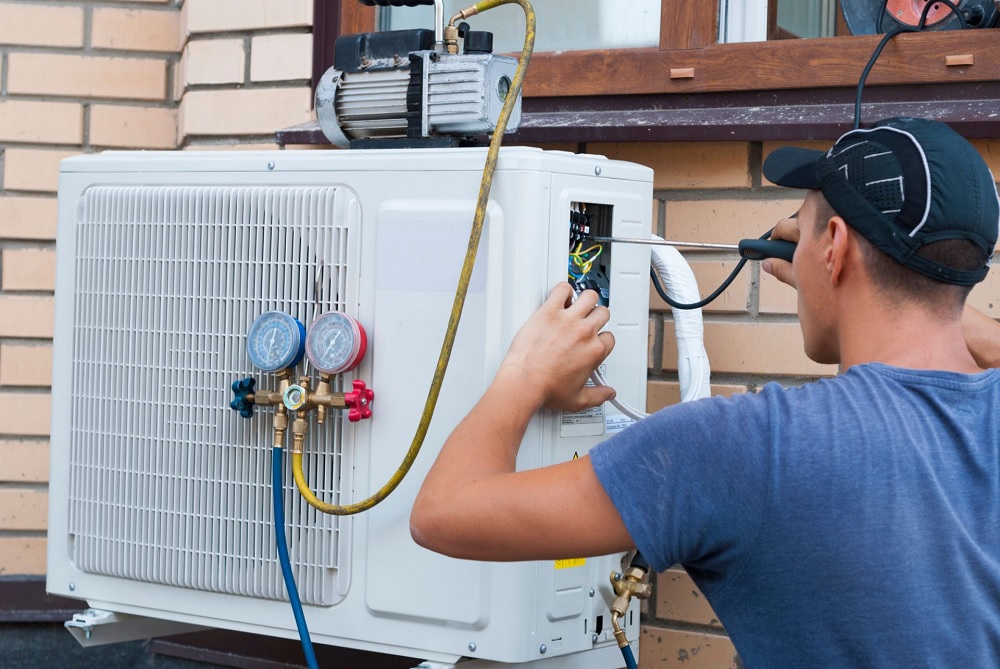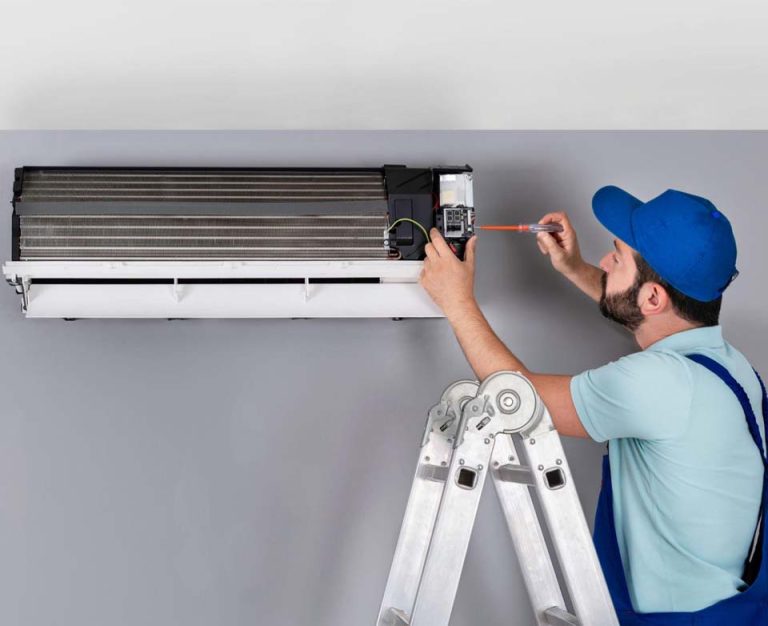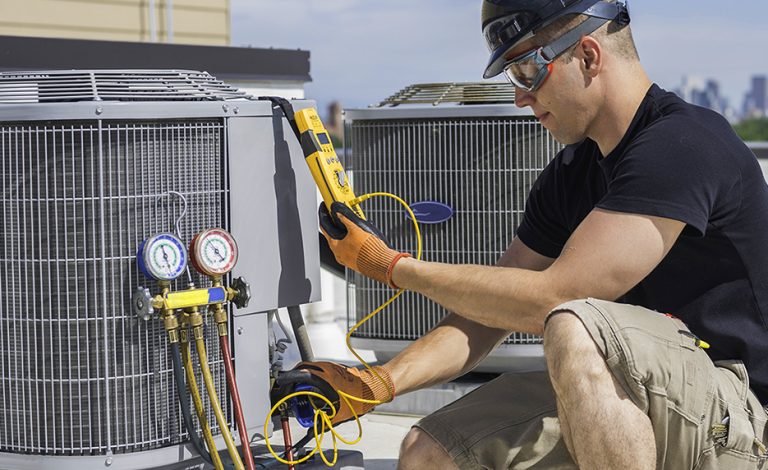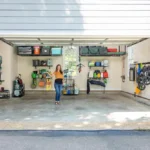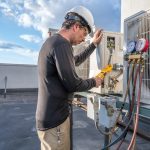The heating, ventilation, and air conditioning (HVAC) system in your home or office is one of the most energy-consuming systems you’ll rely on. In fact, according to the U.S. Department of Energy, HVAC systems account for nearly half of the energy consumption in an average household. With rising energy costs and growing environmental concerns, learning how to optimize the energy efficiency of your HVAC system has never been more important. Whether you’re a homeowner looking to cut energy bills or a business owner aiming to reduce overhead costs, there are numerous strategies to improve HVAC efficiency and save energy. This beginner’s guide will walk you through the essentials of energy saving in HVAC, helping you make informed decisions that will benefit both your wallet and the planet.
When temperatures rise, air conditioning companies Sarasota are ready to help. With fast response times and experienced technicians, they offer full-service HVAC solutions for homes and businesses. Whether you need a new system or just a tune-up, these local companies ensure cool comfort and dependable service all season long.
Understanding How HVAC Systems Use Energy
Before delving into energy-saving strategies, it’s important to understand how your HVAC system uses energy. At its core, an HVAC system regulates the temperature and airflow in your space. It works by heating or cooling air and circulating it through ducts or via vents. Air conditioning systems consume the most energy during the summer months when cooling is needed most, while heating systems often use gas, oil, or electricity to warm your home in winter.
HVAC systems have a few key components that contribute to energy consumption:
-
Heating: Furnaces or heat pumps are typically used for heating purposes. Furnaces burn fuel like gas or oil to generate heat, while heat pumps use electricity to transfer heat from one place to another. Both methods use significant energy, especially in extreme weather conditions.
-
Cooling: Air conditioners and cooling systems use electricity to remove heat from indoor air, lowering the temperature. The most energy-intensive part of an air conditioner is the compressor, which circulates refrigerant through the system to expel heat outdoors.
-
Ventilation: Proper ventilation ensures the circulation of fresh air, and many HVAC systems use fans or blowers to push air through ducts. While this may not consume as much energy as heating or cooling, it still contributes to the overall energy use of the system.
By understanding these key components, you can identify the areas in which your HVAC system may be consuming more energy than necessary. The good news is that there are plenty of effective strategies to reduce energy waste, lower your utility bills, and maintain comfort.
Energy-Saving Tips for HVAC Systems
-
Upgrade to Energy-Efficient Equipment
One of the most effective ways to reduce energy consumption is by upgrading your HVAC system to a more energy-efficient model. Look for units with an Energy Star label, which indicates that the system meets stringent energy efficiency standards set by the U.S. Environmental Protection Agency (EPA).
-
High-Efficiency Furnaces and Heat Pumps: Modern high-efficiency systems use advanced technologies, such as variable-speed motors and electronic controls, to regulate airflow and temperature more precisely. This allows for better energy usage and reduced waste.
-
Programmable and Smart Thermostats: Installing a smart thermostat is one of the easiest and most cost-effective ways to save energy. These devices allow you to program your HVAC system to run only when needed, automatically adjusting the temperature based on your schedule. Many smart thermostats also learn your preferences over time, making them even more efficient.
-
Inverter Technology: Many new air conditioning and heat pump systems come equipped with inverter technology. This allows the system to adjust its speed according to the temperature, meaning it doesn’t have to work at full capacity all the time. This type of modulation ensures a smoother and more energy-efficient operation.
-
Regular Maintenance and System Tune-Ups
A well-maintained HVAC system operates more efficiently and uses less energy. Regular maintenance checks are essential to ensure your system is running at optimal performance. Key maintenance tasks include:
-
Replacing or Cleaning Air Filters: Dirty or clogged filters restrict airflow, forcing your system to work harder. Replacing or cleaning the filters regularly (every 1-3 months, depending on use) ensures optimal airflow and efficiency.
-
Cleaning Coils and Vents: Over time, dirt can accumulate on the evaporator and condenser coils of your air conditioner, reducing its efficiency. Cleaning these coils regularly helps the system run smoothly and reduces energy consumption.
-
Checking Insulation: Insufficient insulation around ductwork or the system itself can lead to significant energy loss. Ensure that ducts and pipes are well-insulated to prevent cool or warm air from escaping.
-
Professional Inspections: Schedule annual check-ups with a qualified HVAC technician. They can check for leaks, inspect refrigerant levels, and perform necessary repairs to maintain system efficiency.
-
Optimize Temperature Settings
A key way to reduce HVAC energy use is by optimizing the temperature settings in your home or business. Adjusting the temperature by just a few degrees can result in significant savings over time.
-
In the Winter: Set your thermostat to a lower temperature when you’re at home and awake, and lower it even more while you’re sleeping or away. The U.S. Department of Energy recommends setting your thermostat to 68°F (20°C) during the winter months when you’re at home. When you’re not home, lowering the temperature by 10-15°F for 8 hours can save around 10% annually on heating costs.
-
In the Summer: During hot months, aim to keep the temperature around 78°F (25-26°C) when you’re at home and awake. When you’re not home, raise the temperature by 5-10°F to avoid wasting energy cooling an empty space.
-
Seal Leaks and Improve Insulation
Air leaks around windows, doors, and ducts are common culprits of wasted energy. When your HVAC system is trying to heat or cool a space with poor insulation or gaps in the structure, it works harder to maintain the desired temperature. Sealing these leaks is a relatively low-cost improvement that can yield big energy savings.
-
Seal Gaps: Use caulk or weatherstripping around windows, doors, and baseboards to prevent air from escaping.
-
Upgrade Insulation: Insulating your attic, walls, and floors helps maintain a consistent temperature inside your home, reducing the strain on your HVAC system.
-
Duct Sealing: Leaky ducts can account for a significant amount of energy loss. Sealing ducts can improve the efficiency of your heating and cooling system by ensuring that conditioned air reaches its intended destination.
-
Consider Zoning Systems
If your home or building has multiple floors or distinct areas that require different temperature settings, consider installing a zoning system. This allows you to control the temperature in specific areas of your home independently, so you’re not wasting energy cooling or heating unused rooms.
Zoning systems use dampers within the ductwork to regulate airflow to different areas. You can create temperature zones based on occupancy patterns, ensuring that energy is only used where it’s needed.
-
Utilize Natural Ventilation and Passive Cooling
While HVAC systems are essential, they shouldn’t be relied on exclusively. When the weather permits, use natural ventilation to cool your home. Open windows on opposite sides of your house to create a cross-breeze, allowing fresh air to circulate through the space. Installing attic fans or whole-house fans can also help expel hot air, reducing the need for air conditioning.
Additionally, passive cooling strategies such as shading your windows or using reflective roof coatings can help reduce the amount of heat entering your home. These small adjustments can reduce the load on your HVAC system and save energy.
Conclusion: Saving Energy Starts with Small Changes
Saving energy in your HVAC system doesn’t have to mean a complete overhaul of your home or business. By implementing a few key strategies—upgrading to energy-efficient systems, maintaining regular check-ups, optimizing temperature settings, sealing leaks, and using zoning or natural ventilation—you can make a significant impact on your energy consumption. Not only will these steps reduce your utility bills, but they’ll also contribute to a more sustainable and comfortable living environment.
By taking control of your HVAC system’s energy usage, you’ll not only be saving money but also contributing to the reduction of your carbon footprint, making a meaningful difference for both your wallet and the environment.

